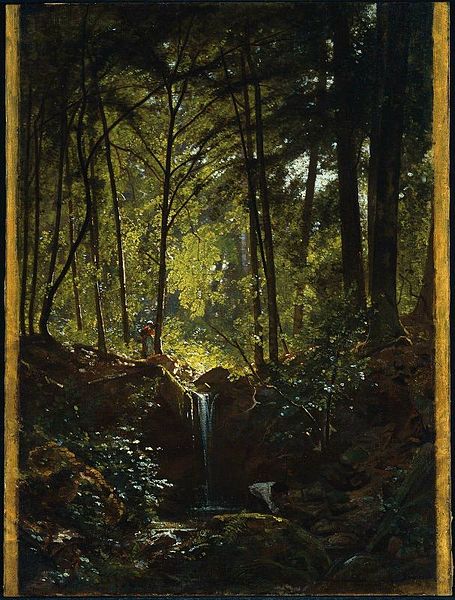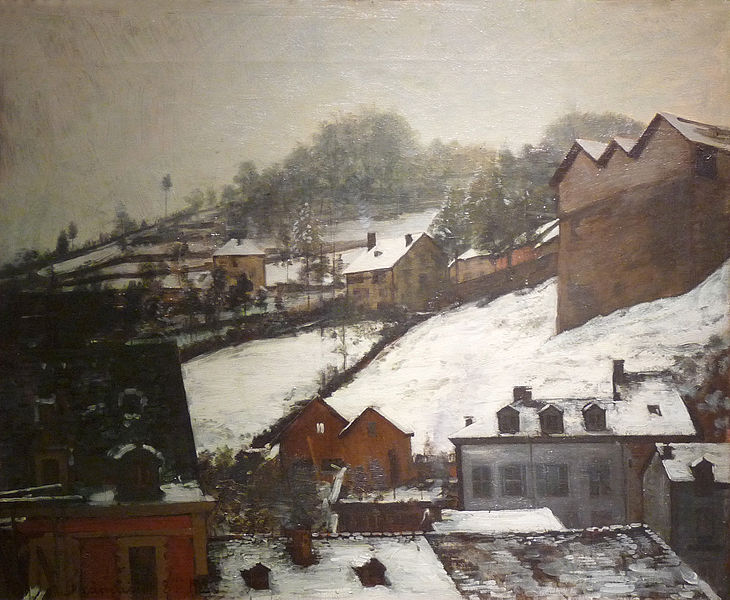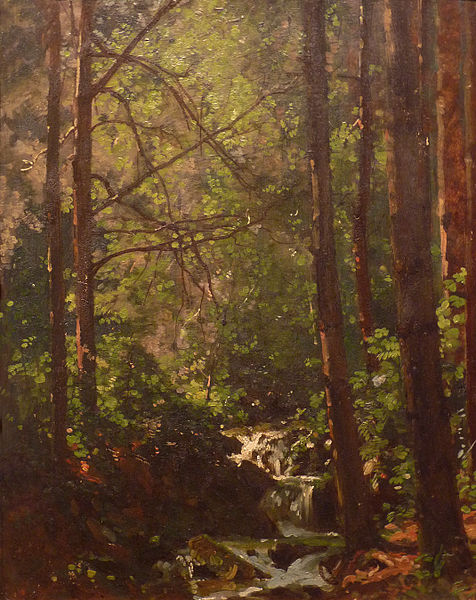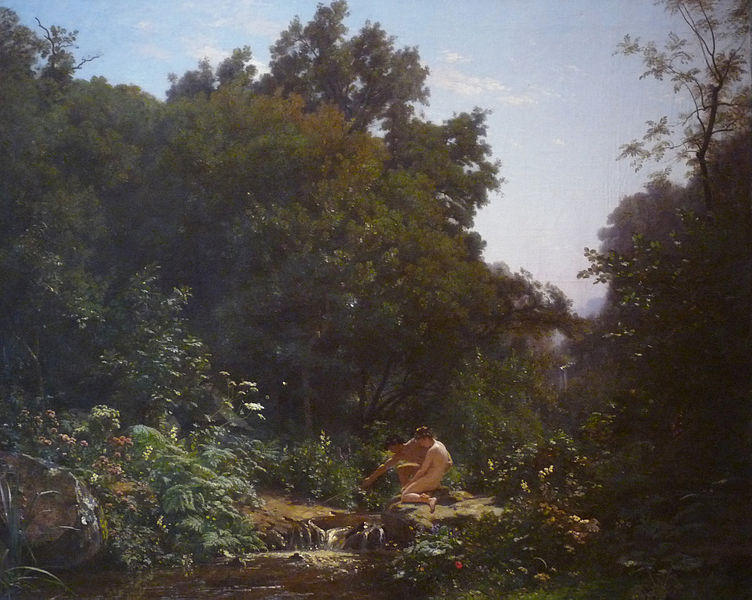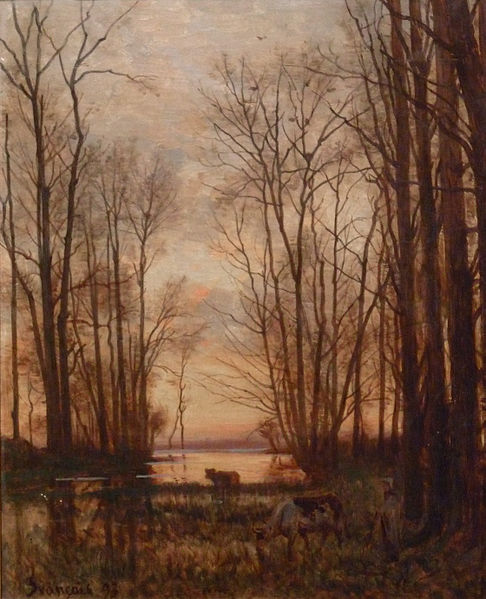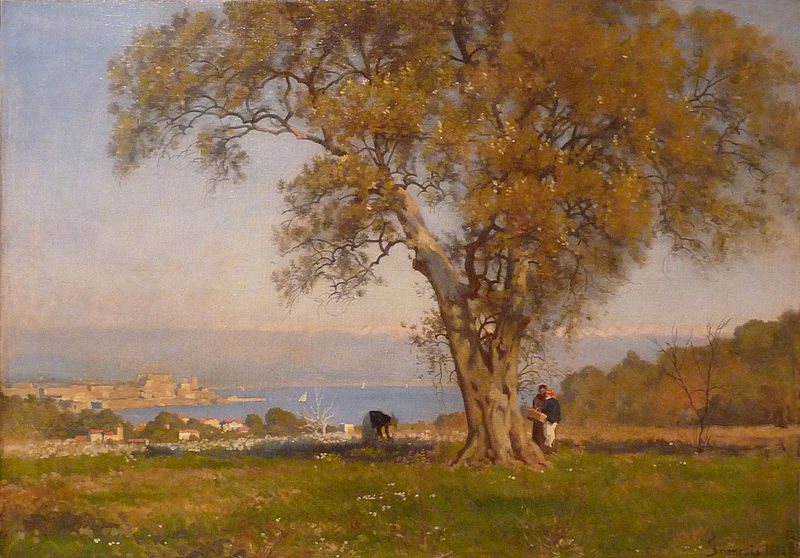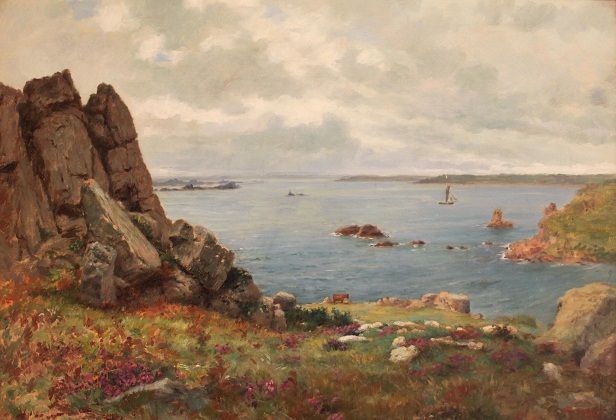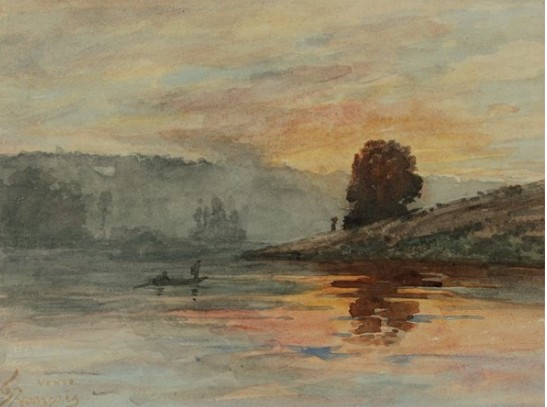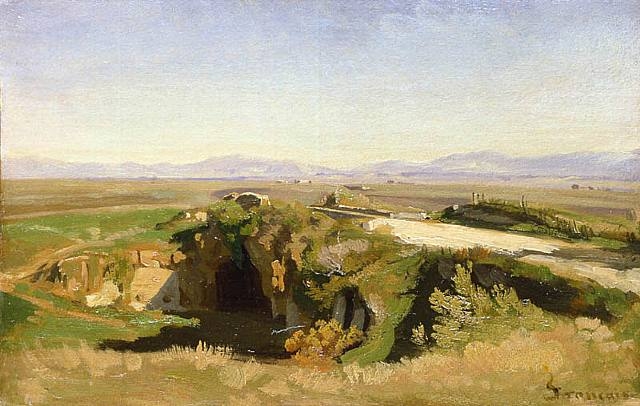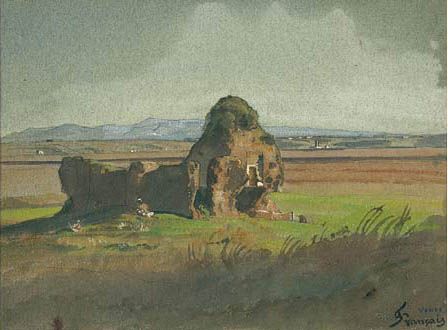<Back to Index>
- Painter Félix Ziem, 1821
- Painter François - Louis Français, 1814
PAGE SPONSOR
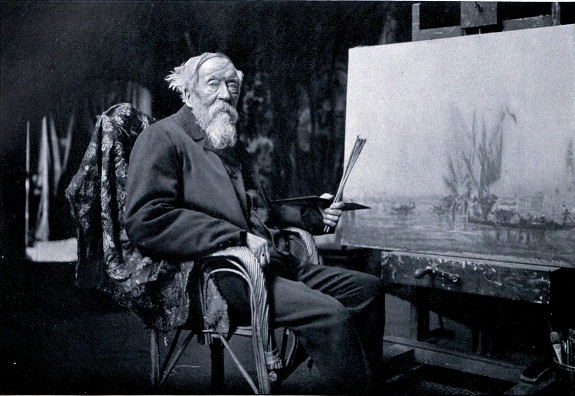
Félix Ziem (February 26, 1821 – November 10, 1911) was a French painter in the style of the Barbizon School.
Born Félix - Francois Georges Philibert Ziem in Beaune in the Côte - d'Or département of the Burgundy région of France, his mother was a native of Burgundy who married an immigrant. Originally, Ziem planned to be an architect and studied at the School of Architecture in Dijon, and for a time worked as an architect. Painting developed from a hobby to a career following an 1841 visit to Italy where he fell in love with the city of Venice, a place that would become the source for many of his works. Apart from Venetian scenes, he also painted many still lifes, portraits and landscapes from a variety of places including Constantinople, Martigues, Cagnes - sur - Mer and his native Burgundy.
Ziem's works were first exhibited in 1849 at the Paris Salon and remained a regular exhibitor there for many years. Part of the Barbizon school, he also traveled extensively throughout Europe and in 1860 moved to Montmartre, the artistic quarter of the city of Paris. Financially successful, he was known to assist struggling young artists.
In 1857, the government of France recognized his contribution to the art world by making him a Chevalier of the Legion of Honor.
Félix Ziem died 1911 and was interred in the Père Lachaise Cemetery in Paris.
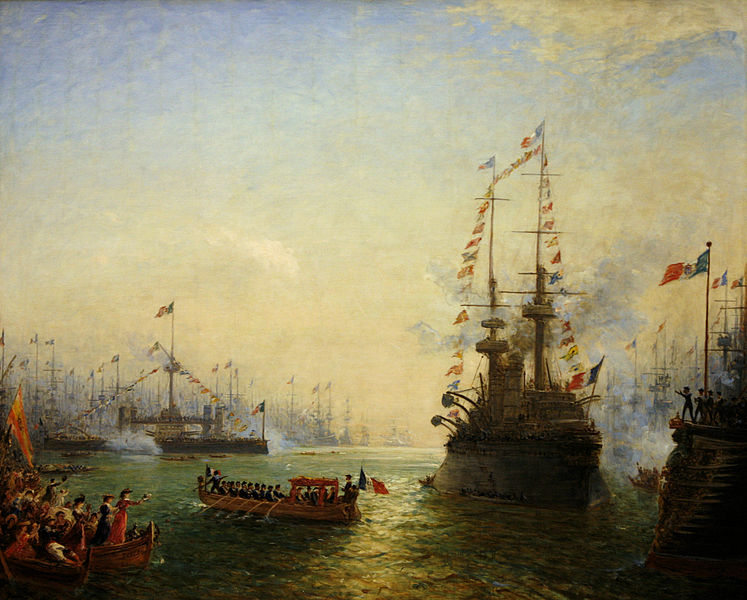
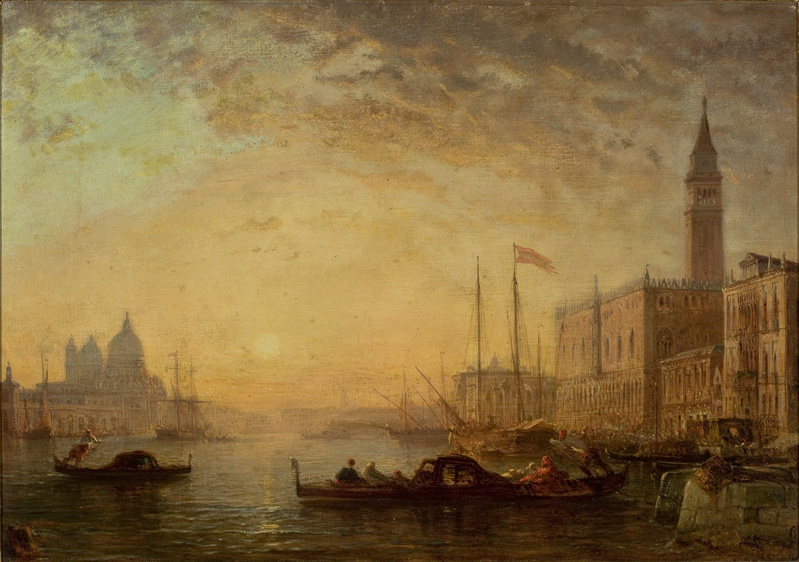
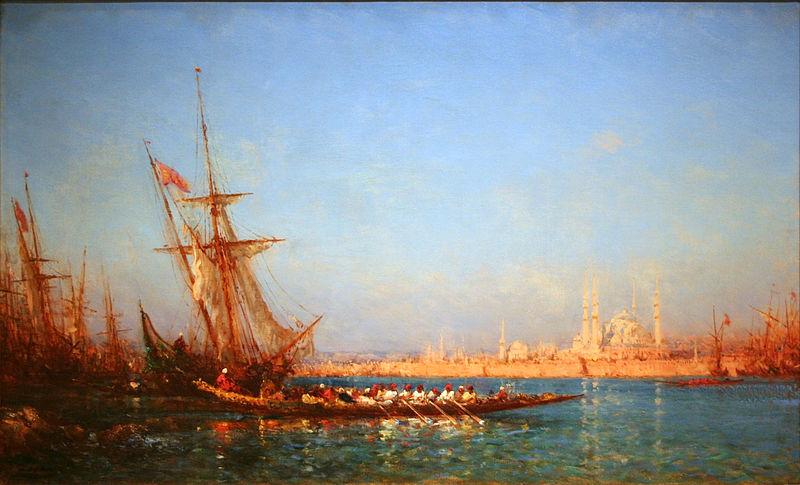
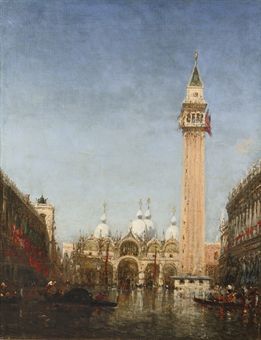
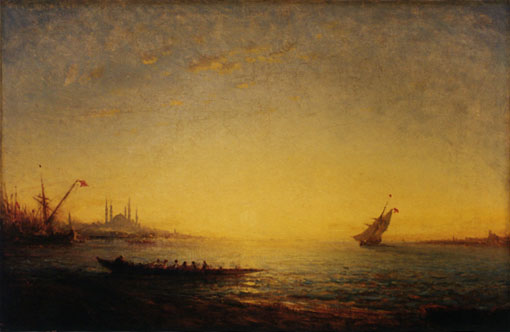
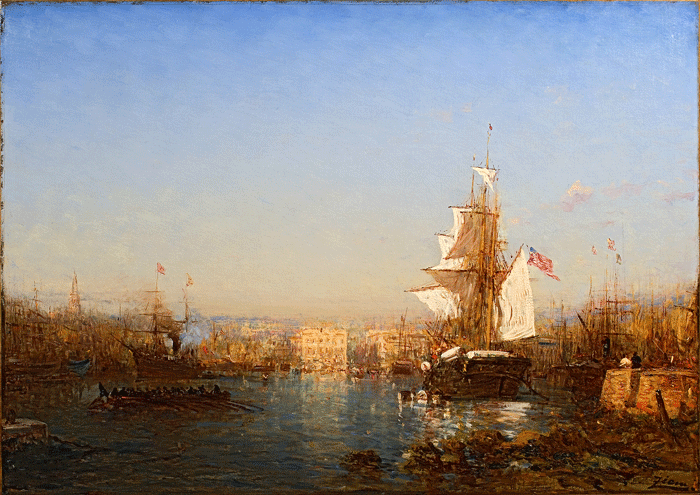
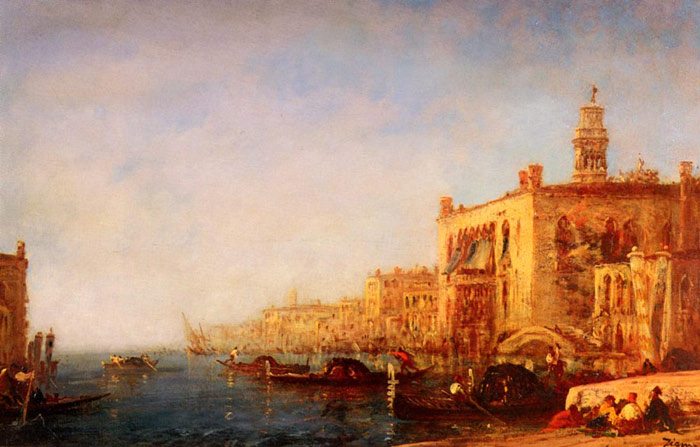
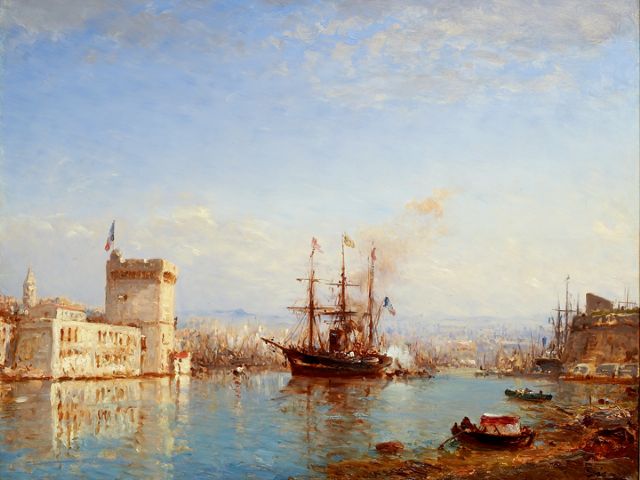
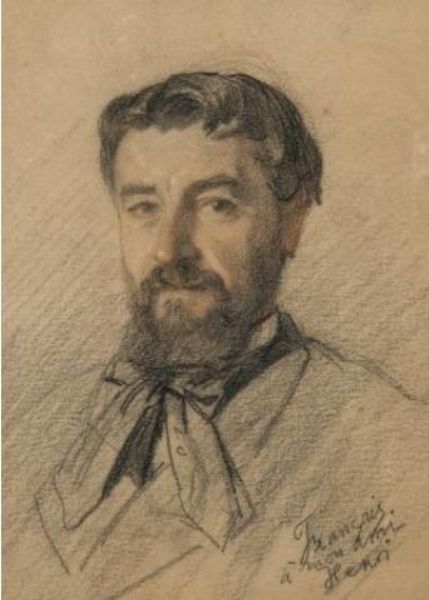
François Louis Français (November 17, 1814 – 1897), French painter, was born at Plombières - les - Bains (Vosges), and, on attaining the age of fifteen, was placed as office boy with a bookseller.
After a few years of hard struggle, during which he made a precarious living by drawing on stone and designing woodcut vignettes for book illustration, he studied painting under Gigoux, and subsequently under Corot, whose influence remained decisive upon Français's style of landscape painting. He generally found his subjects in the neighborhood of Paris, and though he never rivaled his master in lightness of touch and in the lyric poetry which is the principal charm of Corot's work, he is still counted among the leading landscape painters of his country and period.
He exhibited first at the Paris Salon in 1837 and was elected to the Academie des Beaux - Arts in 1890. Comparatively few of his pictures are to be found in public galleries, but his painting of "An Italian Sunset" is at the Luxembourg Museum in Paris. Other works of importance are "Daphnis et Chloë" (1872), "Bas Meudon" (1861), "Orphée" (1863), "Le Bois sacré" (1864), "Le Lac de Némi" (1868).
